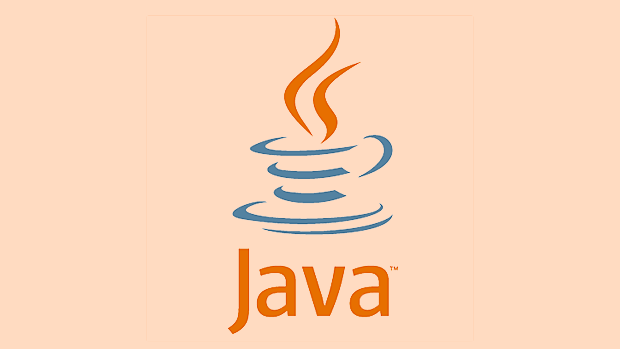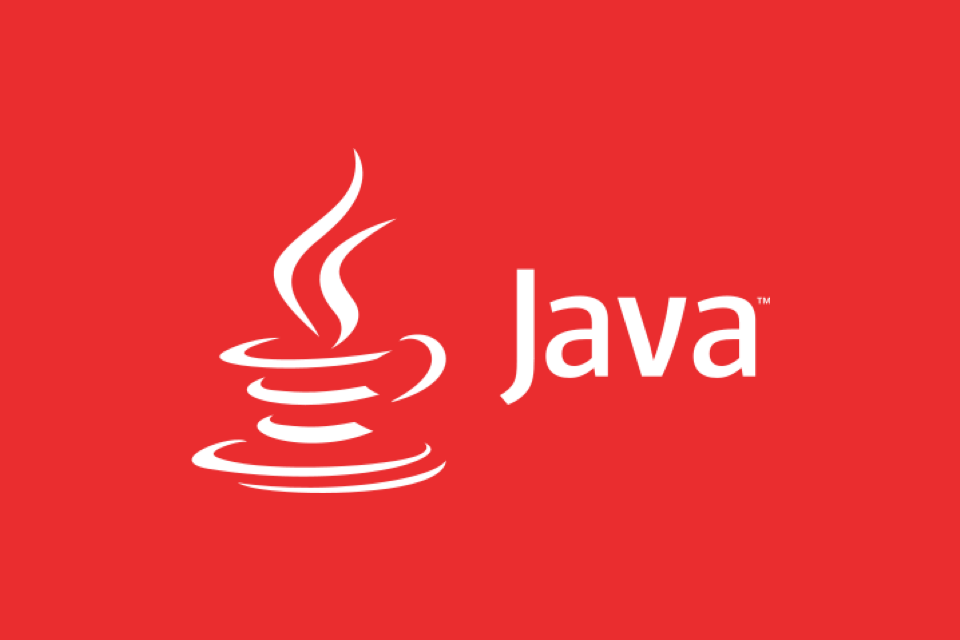Solving Common Java NullPointerException Issues with Optional
Optional

Java's NullPointerException (NPE) is one of the most common runtime errors developers encounter. It typically occurs when you try to access or invoke a method on a reference that points to null . While NPEs are easy to trigger, they can be tricky to debug in large applications. One of the most effective tools introduced in Java 8 to help manage null values is the Optional<t></t> class.

Here's how Optional can help prevent NullPointerException and lead to cleaner, more predictable code.
1. What Is Optional and Why Use It?
Optional<t></t> is a container object that may or may not contain a non-null value. Instead of returning a raw object that could be null , you return an Optional , making it explicit that the value might be absent.

Benefits:
- Makes
nullhandling explicit and intentional. - Encourages safer coding practices.
- Reduces the need for verbose null checks.
// Instead of this
public String getUserName(User user) {
return user.getName(); // Risk of NPE if user is null
}
// Use this
public Optional<String> getUserName(User user) {
return Optional.ofNullable(user)
.map(User::getName);
} By wrapping the result in Optional , you force the caller to handle the possibility of no value.

2. Common Scenarios and How Optional Helps
Avoiding Nested Null Checks
Deep object hierarchies (eg, user.getAddress().getCity().getName() ) are notorious for causing NPEs.
Without Optional :
public String getCityName(User user) {
if (user != null && user.getAddress() != null && user.getAddress().getCity() != null) {
return user.getAddress().getCity().getName();
}
return "Unknown";
} With Optional :
public String getCityName(User user) {
return Optional.ofNullable(user)
.map(User::getAddress)
.map(Address::getCity)
.map(City::getName)
.orElse("Unknown");
} Each map() call only proceeds if the previous value is present — no manual if checks needed.
Returning Null from Methods
Returning null from methods is a common source of NPEs.
Instead of:
public User findUser(String id) {
return users.get(id); // Could return null
}Use:
public Optional<User> findUser(String id) {
return Optional.ofNullable(users.get(id));
}Now, callers must explicitly handle the absence:
findUser("123")
.ifPresentOrElse(
user -> System.out.println("Found: " user.getName()),
() -> System.out.println("User not found")
);Avoiding Null in Collections
Never return null from methods that return collections. Instead, return an empty Optional or empty collection.
Bad:
public List<String> getTags() {
return null; // Dangerous!
}Better:
public Optional<List<String>> getTags() {
return Optional.ofNullable(tags);
}Even better (if empty list is acceptable):
public List<String> getTags() {
return tags != null ? tags : Collections.emptyList();
} But if present/absence of the list itself matters, Optional<List<T>> is appropriate.
3. Best Practices When Using Optional
✅ Use
Optionalas a return type — especially for methods that might not return a value.✅ Avoid using
Optionalfor parameters or fields — it's not designed for that and can hurt performance and clarity.✅ Use
orElse()vsorElseGet()wisely :// orElse always evaluates the default optionalValue.orElse(expensiveOperation()); // Bad: runs even if value present // orElseGet only evaluates if needed optionalValue.orElseGet(this::expensiveOperation); // Good
✅ Don't call
get()without checkingisPresent()— it will throwNoSuchElementExceptionif empty.if (opt.isPresent()) { return opt.get(); // Safe }But better: use
ifPresent(),map(), ororElse().
4. When Not to Use Optional
- Don't overuse it — not every method needs to return
Optional. If a method should never returnnull, just return the type directly. - Don't use
Optionalin streams unnecessarily :// Avoid this anti-pattern stream.map(item -> Optional.ofNullable(item.getValue()).orElse("default"))Just use:
stream.map(item -> item.getValue() != null ? item.getValue() : "default")
Using
Optionalwon't eliminatenullentirely — you still need to be careful with legacy APIs and external inputs — but it shifts the mindset from “hope it's not null” to “handle both cases safely.”Basically,
Optionalmakes your code more expressive and less error-prone when dealing with optional values. It's not a magic fix, but used properly, it can significantly reduceNullPointerExceptionbugs.The above is the detailed content of Solving Common Java NullPointerException Issues with Optional. For more information, please follow other related articles on the PHP Chinese website!

Hot AI Tools

Undress AI Tool
Undress images for free

Undresser.AI Undress
AI-powered app for creating realistic nude photos

AI Clothes Remover
Online AI tool for removing clothes from photos.

ArtGPT
AI image generator for creative art from text prompts.

Stock Market GPT
AI powered investment research for smarter decisions

Hot Article

Hot Tools

Notepad++7.3.1
Easy-to-use and free code editor

SublimeText3 Chinese version
Chinese version, very easy to use

Zend Studio 13.0.1
Powerful PHP integrated development environment

Dreamweaver CS6
Visual web development tools

SublimeText3 Mac version
God-level code editing software (SublimeText3)

Hot Topics
 1651
1651
 276
276
 Solving Common Java NullPointerException Issues with Optional
Aug 31, 2025 am 07:11 AM
Solving Common Java NullPointerException Issues with Optional
Aug 31, 2025 am 07:11 AM
Optional is a container class introduced by Java 8. It is used to clearly indicate that a value may be empty, thereby avoiding NullPointerException; 2. It simplifies nested null checking by providing map, orElse and other methods, preventing methods from returning null and standardizing collection return values; 3. Best practices include only returning values, avoiding the use of fields or parameters, distinguishing orElse from orElseGet, and not calling get() directly; 4. Optional should not be abused. If non-empty methods do not need to be wrapped, unnecessary Optional operations should be avoided in the stream; correct use of Optional can significantly improve code security and readability, but it requires good programming habits.
 Edit bookmarks in chrome
Aug 27, 2025 am 12:03 AM
Edit bookmarks in chrome
Aug 27, 2025 am 12:03 AM
Chrome bookmark editing is simple and practical. Users can enter the bookmark manager through the shortcut keys Ctrl Shift O (Windows) or Cmd Shift O (Mac), or enter through the browser menu; 1. When editing a single bookmark, right-click to select "Edit", modify the title or URL and click "Finish" to save; 2. When organizing bookmarks in batches, you can hold Ctrl (or Cmd) to multiple-choice bookmarks in the bookmark manager, right-click to select "Move to" or "Copy to" the target folder; 3. When exporting and importing bookmarks, click the "Solve" button to select "Export Bookmark" to save as HTML file, and then restore it through the "Import Bookmark" function if necessary.
 Enter key not working on my keyboard
Aug 30, 2025 am 08:36 AM
Enter key not working on my keyboard
Aug 30, 2025 am 08:36 AM
First,checkforphysicalissueslikedebrisordamageandcleanthekeyboardortestwithanexternalone;2.TesttheEnterkeyindifferentappstodetermineiftheissueissoftware-specific;3.Restartyourcomputertoresolvetemporaryglitches;4.DisableStickyKeys,FilterKeys,orToggleK
 What are wrapper classes and why are they used in Java?
Sep 01, 2025 am 05:58 AM
What are wrapper classes and why are they used in Java?
Sep 01, 2025 am 05:58 AM
Wrapperclassesareusedtoconvertprimitivedatatypesintoobjects,enablingtheiruseincollections,allowingnullvalues,providingutilitymethods,andsupportingautoboxing/unboxing.1.TheyallowprimitivestobeusedincollectionslikeArrayList,whichonlyacceptobjects.2.The
 What is a memory leak in Java?
Aug 28, 2025 am 05:37 AM
What is a memory leak in Java?
Aug 28, 2025 am 05:37 AM
AmemoryleakinJavaoccurswhenunreachableobjectsarenotgarbagecollectedduetolingeringreferences,leadingtoexcessivememoryusageandpotentialOutOfMemoryError.Commoncausesincludestaticcollectionsretainingobjectsindefinitely,unclosedresourceslikestreamsorconne
 How to find the max or min value in a Stream in Java
Aug 27, 2025 am 04:14 AM
How to find the max or min value in a Stream in Java
Aug 27, 2025 am 04:14 AM
Use the max() and min() methods to combine Comparator to find the maximum and minimum values in the stream, such as Comparator.naturalOrder() or Integer::compareTo compare basic types; 2. For custom objects, use Comparator.comparing() to compare based on specific fields, such as Person::getAge; 3. Since the result is Optional, the empty stream situation must be handled. You can use isPresent() to check or orElse() to provide default values. It is recommended to use IntStream for basic types to avoid boxing overhead and improve performance. In the end, you should always be properly done.
 CVE-2024-20674|Windows Kerberos security function bypasses vulnerability
Sep 02, 2025 pm 05:18 PM
CVE-2024-20674|Windows Kerberos security function bypasses vulnerability
Sep 02, 2025 pm 05:18 PM
0x00 Foreword Kerberos was created by MIT as a solution to these cybersecurity issues. Is a client/server architecture that provides security verification processing over the network. Through verification, the identity of the sender and receiver of network transactions can be ensured to be true. The service can also verify the validity (integrity) of data passed back and forth and encrypt the data during transmission (confidentiality). 0x01 Vulnerability Description An attacker with access to a victim network can exploit this vulnerability by establishing an intermediate (MITM) attack or other local network spoofing techniques, and then sending a malicious Kerberos message to the client victim's computer and pretending to be a Kerberos authentication server. 0x02CVE
 How to format numbers in Java using DecimalFormat
Aug 30, 2025 am 03:09 AM
How to format numbers in Java using DecimalFormat
Aug 30, 2025 am 03:09 AM
Use DecimalFormat to accurately control digital formats. 1. Use pattern strings such as "#,###.##" for basic formatting, where # represents an optional number, 0 represents a must-display number, is a thousand separator, and is a decimal point; 2. Common modes include "0.00" to retain two decimal places, "0,000.000" to complement zero alignment, etc.; 3. Avoid scientific notation methods, you can setScientificNotation(false) or use a mode with sufficient digits; 4. You can set rounding mode through setRoundingMode(), such as HALF_UP, DOWN, etc.





